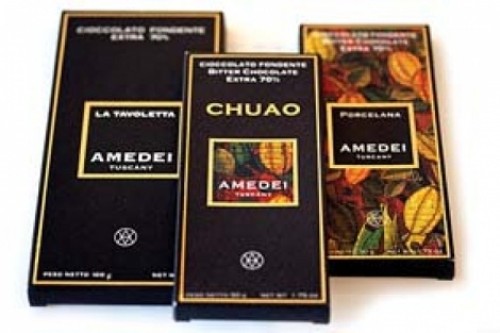I am a wine-mad Lear wandering on the heath, spitting my rage and disdain at the insistent Valentine theme of chocolateand-wine pairings that beats me about the face and neck, as it always does this time of year. I Google “wine and chocolate” and 43,600,000 results pop up in 0.13 seconds. This does nothing to dissuade my cynicism.
These fairy tales of Big Bad Cabernets and Dark Chocolates making magic are a myth, a crock to be sure. I see people insist that Cabernet dark chocolate = divine, this combining of two incredibly bitter substances into the darkest heart of bitterness.
They grimace and glower, breathing with a sigh of relief when they swallow. I have lost friends over this wine-and-chocolate thing.
Red wine and chocolate share in common a plant origin. This means that their by-products will possess plantbased polyphenols—bitter extracts that create “tannin.” Tannins are compounds in both red wine and chocolate that generate bitter astringency in the mouth, what many refer to as “dryness” because it feels like the mouth is drying out (although in wino techno-dork terms, dryness means simply the absence of sugar). Combining excess amounts of tannin in the mouth just doesn’t work: bitter bitter = really bitter. Wine and chocolate can be incredibly complex, but paying attention to a few critical details will help make magic on this amorous weekend. Happily, any necessary “research” is fun and cheap.
Begin your studies with a free tasting tour at Tony Caputo’s Market & Deli. With a breathtaking 300-plus varieties of chocolate bars, any notion of Hershey’s as an acceptable treat will be banished from your consciousness. Cacao beans are as reflective of their growing regions as grapes, possessing characters every bit as diverse as wine. But, like wine, knowledge is a curse when it comes to chocolate. Before you know it, you’ll be crawling the junkie streets for your next angry chocolate fix. Again, it’s a matter of getting acquainted with one’s palate, which, for me, changes with mood. Some days, it’s the sunny cashew and honey tones of the Domori Cacao Teyuna Bar; other days it might be the darker, richer, deeper flavors of the Amedei “9”. Even white chocolate earns a place at the table with the sunny bite of summer that is the Amedei White Chocolate Pistachio Bar. For pairings, look toward Port or Sherry (which are generally richer and sweeter than table wine) or a higher-alcohol red like Zinfandel for those darker expressions of chocolate. Late-harvest wines, made from raisins, are richer, sweeter, lower-alcohol wines that also pair well. Most table wines require a little extra work. Low-alcohol whites such as Riesling or Moscato D’Asti can be fruity enough for moderately dark chocolates. As alcohol percentages climb with reds, so, too, does the fruitiness and richness; again, the perceived sweetness of one should exceed the sweetness paired with it. Think milkier sweeter chocolates with lower-alcohol reds and progressively darker options as you make your way to juicy reds like Zinfandel.
Since darker chocolates tend to be bitterer (just enough sugar is used to accentuate the characters of the cacao) they require sweeter/fruitier wines. That is, wines made with riper grapes and therefore higher alcohol and accordingly higher levels of glycerol (sugar alcohols). Sugar smoothes out bitterness, while accenting the character of the cacao. Therefore, wine should be sweeter than the chocolate or chocolate should be sweeter than wine (any wine-with-dessert pairing should follow this simple rule). It’s a sweet balancing act. CW
Speaking of...
-
The Oldest, Stalest Chocolate Ever Has Been Found in Utah
- Jun 18, 2013
-
Pop-Up Farmers Market This Saturday
- Feb 7, 2013
-
Glad You Asked: B-Ball, Reggae and Water Colors
- Mar 15, 2012
- More »
More by Francis Fecteau
-
Reading Wine Lists & Labels
How to read wine lists and labels, and getting to know your importers.
- Jan 6, 2010
-
Hopland
Discovering one of California wine country's shiniest jewels.
- Dec 23, 2009
-
Wine & Aging
Patience is a Virtue: Looking for the sweet spot as wine waxes and wanes.
- Dec 9, 2009
- More »




